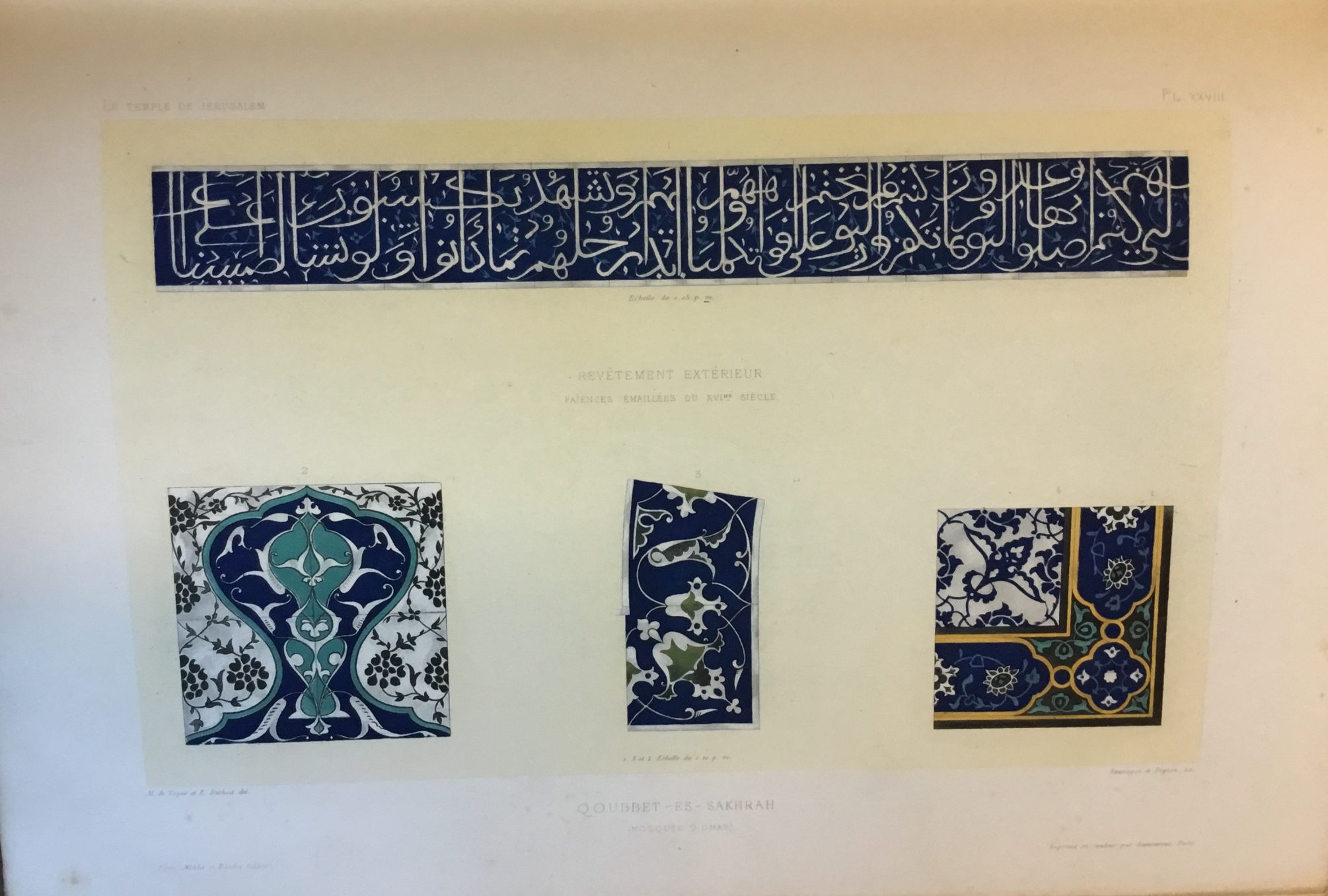Le Temple de Jerusalem Monographie du Haram-Ech-Cherif Suivi d’un Essay sur la Topographie de la Ville-Sainte.
De Vogue, Charles-Jean-Melchior.
Synopsis
Charles-Jean-Melchior de Vogüé embarked on an extensive survey of the Aqsa Mosque. Between 1853 and 1854 he travelled as a photographer to Syria and Palestine with another archaeologist William H. Waddington, the artist E. Duthoit, and later, Henri Sauvaire, the French Consul in Beirut. With the help of the French Consul in Jerusalem Mr. de Barrère, he was able to acquire a permission from the Ottoman authorities to start his research into the Aqsa Mosque. De Vogüé examined the structure of the Mosque, including stone work and the walls and described his findings in this work. The different surveys of the Mosque in the 19th century attest to the growing Western interests in the Holy Land. The importance of de Vogue’s work lies in the fact that he found remnants of ancient frescoes which had been largely destroyed during a previous restoration. The appendix in this work has details of the topography of Jerusalem.
Bibliographic references: Blackmer 1744; Röhricht 2340; Tobler p. 187.








